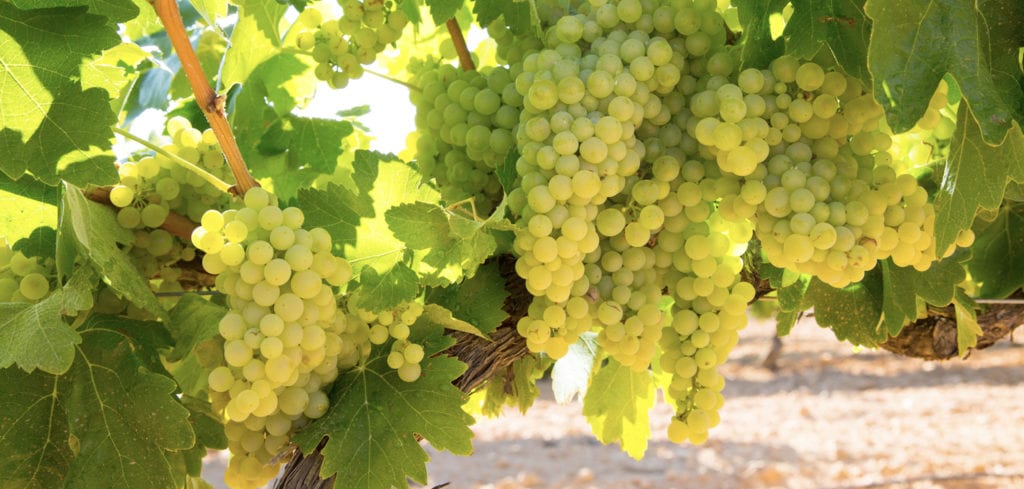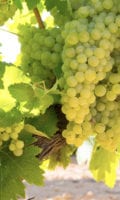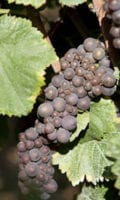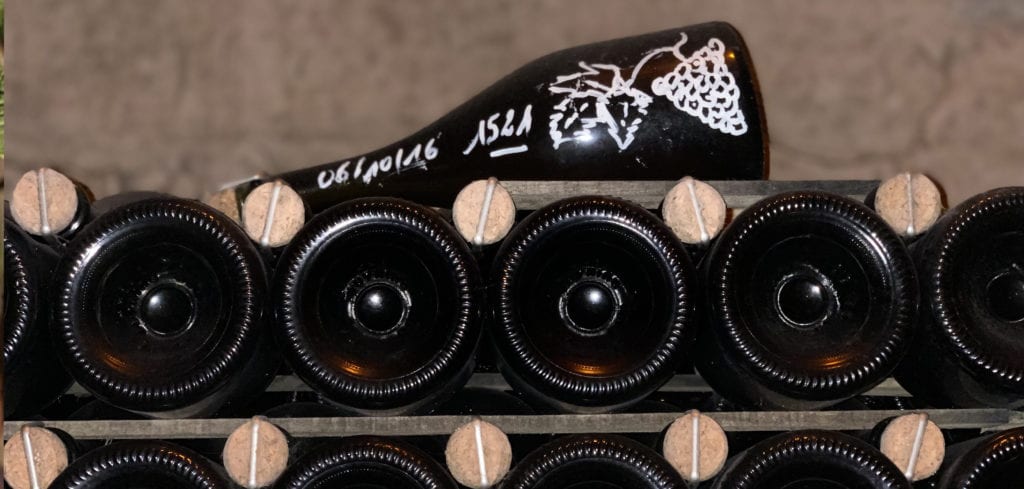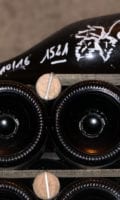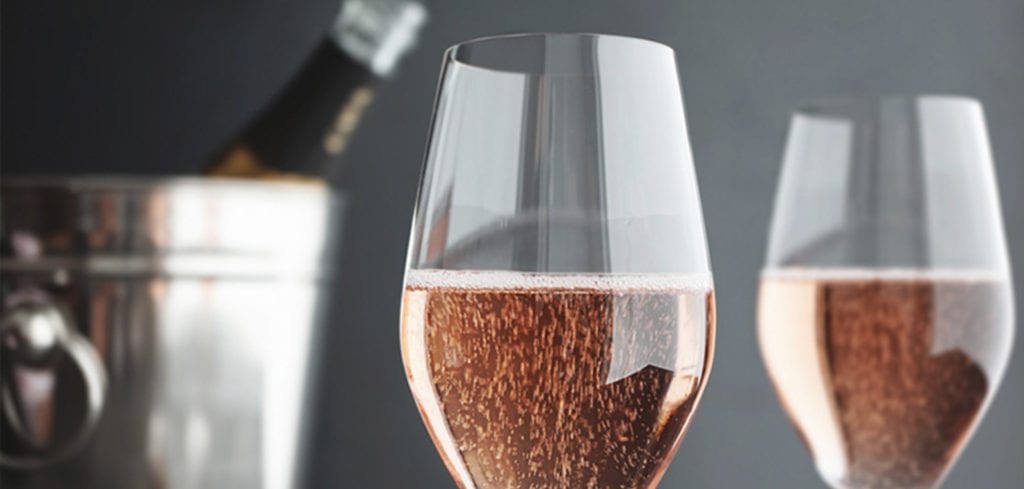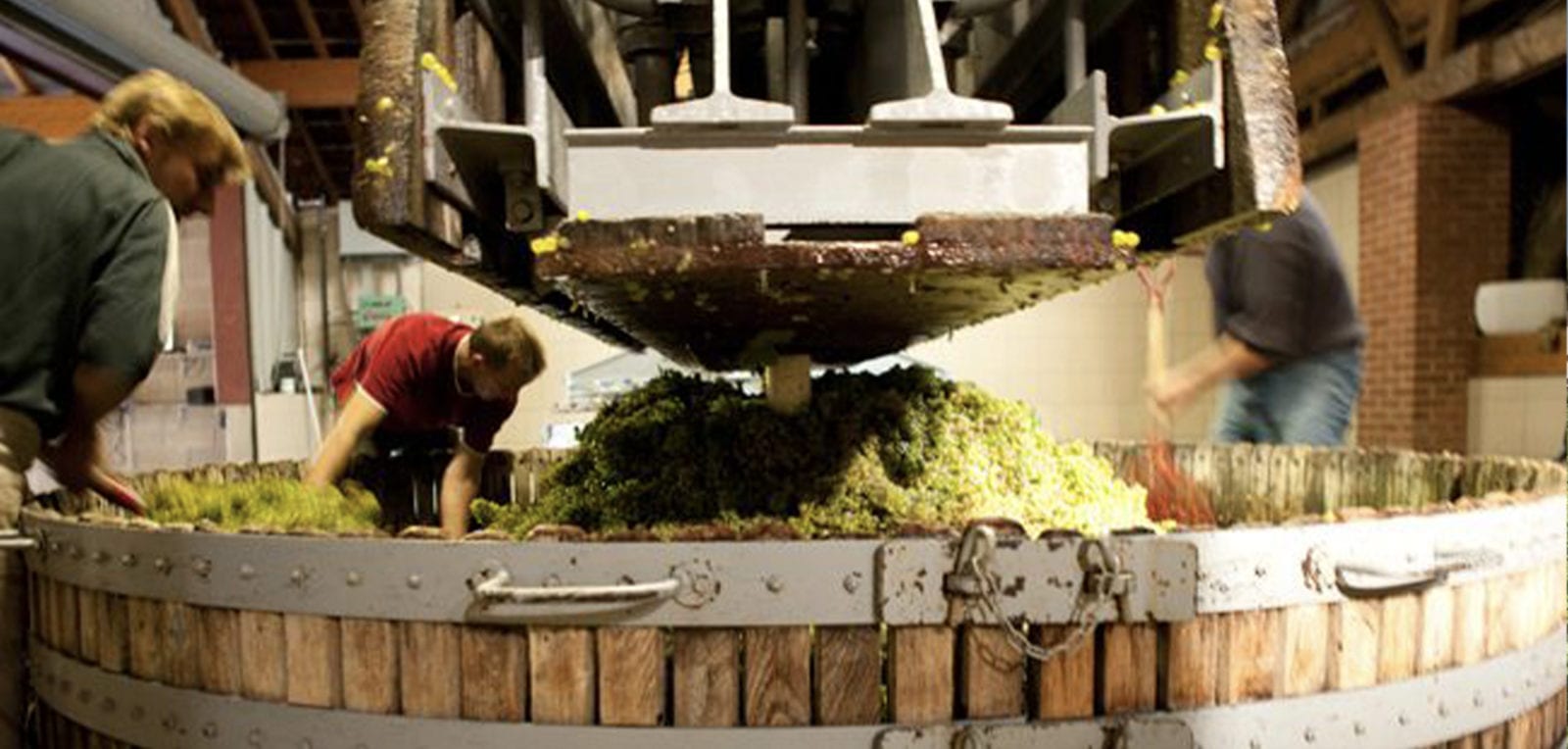
3 grape varieties are used for champagne almost exclusively: The two red grape varieties "Pinot Noir" and "Pinot Meunier", as well as the white grape variety "Chardonnay". The varieties "Arbane", "Pinot Gris", "Petit Meslier" and "Pinot Blanc" are permitted, but have almost disappeared since the phylloxera crisis (or phylloxera catastrophe of 1865-1885).
- Pinot Noir (red grape, Pinot Noir) - gives the wine its fullness.
In Champagne, Pinot Noir is the most important component of champagne, and with a share of 38% ahead of the Chardonnay and Pinot Meunier grape varieties. For this purpose, the grapes are pressed and the light juice obtained is fermented without maceration and thus without the skins, resulting in a white wine. Single-varietal Champagne made from Pinot Noir is marketed under the name "Blanc de Noirs" (BdN). - Pinot Meunier (red grape, Black Riesling) - provides the fruitiness.
In France, the "Black Riesling" variety is called Pinot Meunier (Müller-Pinot). It has this name because its leaves, which are very hairy on the underside, look as if they have been dusted with flour.
In the Champagne, Black Riesling occupies about 37% of the vineyard area and, along with Pinot Noir and Chardonnay, is often a component of the base wines. Most of the vineyards are located in the Marne valley and the Pinot Meunier is, compared to Pinot Noir, less demanding in terms of location and soil. This fairly uncomplicated variety thrives on strong "loess-loam" soils. Due to its late budding, it is barely endangered by the dreaded May frosts. - Chardonnay (white grape) - is responsible for the character.
Chardonnay is one of the most popular grape varieties in the world and one of the main grape varieties in champagne. In France, about 36,302 hectares are planted with Chardonnay. In the Côte des Blancs, preferably produced are pure Chardonnay cuvées. The Chardonnay is considered a very high-quality white wine grape. Its wine is characterised above all by full-bodied richness.
The 4 additionally approved, but almost disappeared grape varieties are:
- Pinot Gris (white grape, Pinot Gris or Ruländer).
Although the skin of the berries is reddish in colour, it is classified as a white variety. Pinot Gris is a mutation of Pinot Noir or Blauburgunder from the diverse Burgundy family. In champagne, Pinot Gris is still permitted as a traditional grape, usually there called "Fromentau", but it is very rare. The Champagne maison Laherte, however, produces "Les 7", a cuvée of all 7 permitted Champagne varieties. - Pinot Blanc (white grape, Weissburgunder, Pinot Bianco or Klevner).
It is the lightest of all Burgundy varieties and has been known since the 14th century. For a long time, no differentiation was made between Pinot Blanc, Chardonnay and "Auxerrois", as all three varieties can only be distinguished by trained ampelography and molecular biological methods. - Arbane (white grape)
Arbane comes from France, where it is one of the long-established varieties in the Bar-sur-Aube area within the Champagne wine region. It was still widespread there in the 19th century and, for historical reasons, is still permitted for the production of champagne. Due to its late ripening, it claims the best sites and yields a very good and alcohol-rich wine in good years. Due to this demand, only about 1 hectare is officially planted with Arbane in the Côte-de-Bar and in Venteuil in the Marne Valley and hardly any new plantings are made. As mutations, there is also a pink-berry "Arbane Rouge" and a dark-berry "Arbane Noir". - Petit Meslier (white grape)
Petit Meslier was still widespread in the Champagne in the 19th century and is still permitted for the production of champagne for historical reasons. Since yields are comparatively low at 30 to 40 hectolitres/hectare, it is usually abandoned in favour of Chardonnay. According to José Vouillamoz, a Swiss biologist, Petit Meslier originated from a spontaneous crossing of Savagnin and Gouais Blanc.


